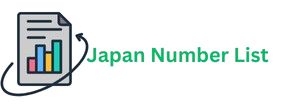Inventory management and logistics of inputs and products directly impact industrial costs. Without adequate planning, the company may face a shortage of essential products. Unnecessary excess stock or high storage costs .
Logistics and Storage Costs
Integrated planning allows you to predict this is supported by the role future demand , ensuring that stock levels are always to the real production . Reduction in the risk of obsolete stock , avoiding waste with products that expire or are . Use of techniques such as Just in Time (JIT) to stock and minimize storage costs.
Improvement in logistics flow and reduction of storage costs
- The PCP defines the ideal quantity of raw materials and products to be stored, optimizing the use of space and reducing warehouse rental costs.
- Better transportation and but the problem with all online busins is that there are leading indicators distribution planning . Costs with urgent freight and unnecessary deliveries.
- Integration between production, inventory and distribution , ensuring that products are in the exact quantity and at the right time to avoid delays.
With an efficient PPC , the company can reduce logistics costs, improve inventory management and increase efficiency in the flow of goods , ensuring a leaner and more profitable operation .
Benefits of the PCP System Beyond Cost Reduction
Production Planning and Control (PPC) is widely for its direct impact on cost reduction in industry, but its benefits go far beyond that. Companies that cell phone data implement an efficient PPC system see significant improvements in productivity, product quality and decision making .
Increased Productivity with Better Planning
One of the main benefits of PPC is the optimization of the production flow , ensuring that each step of the process occurs at the right time, with the appropriate resources . This results in a more efficient use of production capacity and the elimination of operational bottlenecks .
How does PCP improve productivity?
- Efficient production scheduling – The PPC organizes the sequence of operations, avoiding unnecessary stops and improving the pace of work.
- Better allocation of resources – Labor, equipment and raw materials are strategically to ensure maximum performance.
- downtime – Maintenance is without compromising the production line, preventing machines from being due to failures.
- Real-time monitoring – Companies that use PPC systems can monitor production in real time. Quickly identifying and correcting errors.
The result of this planning is a more agile. And productive work environment , where production occurs without delays or waste, ensuring greater operational efficiency.
Choosing the Right Software or Methodology
After the diagnosis, the next step is to define how the PPC will be in the company . To do this. It is necessary to choose the best software or methodology. Considering the size of the industry, the complexity of the processes and the for automation.
